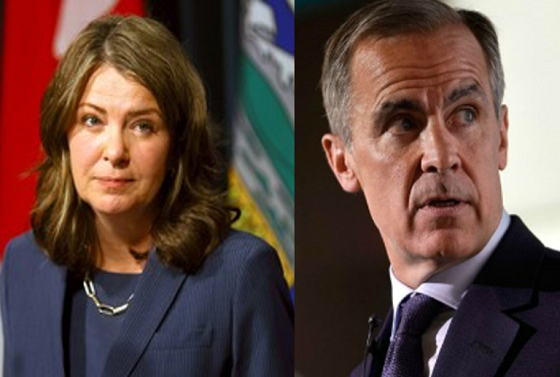Brownstone Institute
The Naked Absurdity of Global Public Health

BY
“Those Who Can Make You Believe Absurdities, Can Make You Commit Atrocities.” ~ Voltaire.
Something is fundamentally wrong with global public health. More accurately, something is fundamentally wrong with the mindset of global health professionals, particularly those in positions of leadership. It has become normal to speak, repeat, and defend complete absurdity, as if illusions and fantasies are real. There are no sanctions for operating in this way – indeed it is proving highly successful. Statements of demonstrable stupidity are becoming prerequisites for career advancement and the approval of peers. It is like living within a fantasy, except those it kills are real.
The world at large struggles to understand that they could be fed falsehoods on this level. Most people still consider the experts quoted in the media to be credible, serious people. They believe that those leading the health professions would not habitually lie. For professionals to act like this, they would have to be deeply troubled, insecure people, or they would have to be quite malevolent. This does not fit the popular image of global health experts.
Beyond individuals, we now have entire institutions mocking reality. They lie to each other and the public, repeat these lies, and applaud each other for doing so. They can state obvious stupidity with impunity as a once critical media now sees its role as backing them unquestioningly, disseminating their pronouncements and suppressing any information to the contrary for a perceived public good. The emperor’s obvious nakedness has become proof that he is clothed. Acknowledging the evidence of one’s eyes as he parades his wares is tantamount to the crime of Galileo and must be treated accordingly.
The opportunity of COVID-19
Over the last two years, the world’s premier health institutions pretended that humans were unlikely to develop effective clinical immunity in response to coronavirus infections, despite experience with the four common seasonal coronaviruses and the SARS-1 confirming that we do. Despite established understanding of mucosal immunity and T-cell function, the public were asked to believe that antibody titers against a single highly-variable pharmaceutically-induced protein were the only valid measure of effective immunity. The leaders and staff within these health organizations knew this was frankly silly, and that the evidence on COVID-19 was showing otherwise.
All these institutions knew that, in time, the relative effectiveness of post-infection immunity would become obvious to all. But this did not stop them from stating that vaccines were ‘the only way out of the pandemic,’ as if established fact, denigrating those who thought differently and ignoring the natural resolution of prior pandemics. Despite accumulating evidence that the obvious is indeed obvious, this position of fallacy still drives the COVAX global vaccination program. Current evidence that post-infection immunity is more effective than vaccination is of no value– truth simply does not matter to these people anymore.
In 2019, the term ‘genetic medicines’ referred to pharmaceuticals based on introduction of genetic material into a body for therapeutic purposes. It is standard industry terminology for mRNA formulations such as those that induce SARS-CoV-2 (COVID-19) spike protein production. In 2020, institutions that previously used this term for COVID-19 vaccines decided that continuing to do so would equate to promoting a ‘conspiracy theory’ – a particularly severe transgression. These mRNA medicines work by inserting synthetic genes into a person’s cells, using the host’s intracellular machinery to translate the genetic sequence into a foreign protein that is expressed by the cell. These cells are then recognized as foreign by the host’s immune system and killed. While this change to the definition of vaccine can be justified by the end result (an immune response), mRNA vaccines are indeed, as the pharmaceutical industry notes, genetic medicines.
It was considered necessary that the public consider such medicines to be indistinguishable from conventional vaccines that present proteins or other antigens to the immune system through an entirely different mechanism. The fallacy was formed to support the claim that if one type of vaccine was safe and effective, then the other must be.
The entire pharmaceutical industry knows this is an absurdity; mRNA injections may well be safe and effective, or they may not, but they are no more like injecting a protein or attenuated virus than riding a bicycle is to riding a train. If the department of transport told us that railways prove that bicycles are safe and effective, we would laugh. Except we wouldn’t anymore.
We would, apparently, signal our agreement because to identify differences between bicycles and trains would be evidence of incorrect thinking (misinformation, or a conspiracy theory). Similarly ‘incorrect’ thinking regarding COVID-19 has been characterized in the Journal of the American Medical Association, with a nod to Nazism, as a neurodegenerative disorder.
Tedros perfects the art
Tedros Adhanom Ghebreyesus and the World Health Organization (WHO) he leads have perfected the art of mainstreaming the ridiculous through COVAX. With a budget several times higher than any prior international health program, it aims to vaccinate billions of already-immune people in age groups barely affected by COVID-19. WHO is aware that the vaccines do not significantly reduce spread, that post-infection immunity is effective, and that vaccinating people with post-infection immunity will provide minimal additional clinical benefit.
WHO promotes COVAX under the banner “No one is safe until all are safe.” WHO thus wants the public to believe that vaccinating an individual does not protect them until everyone else is vaccinated, whilst simultaneously believing, as WHO insists, that vaccination against COVID-19 is highly protective for all those who are vaccinated.
The complete incompatibility of these claims, together with the absurdity of claiming that a vaccine that does not stop transmission could protect others and ‘end the pandemic,’ does not matter. The writers and designers of WHO’s speeches and brochures know these opposing claims cannot simultaneously be true. They have found that stating absurdities is rewarded, and that if a young boy points to the emperor’s nakedness he can simply be denigrated and excluded, while the emperor swaggers on.
A pox on us all
Tedros recently proclaimed monkeypox, a virus that had then killed 5 people globally, to be a public health emergency of international concern. His organization’s last such pronouncement contributed to an increase of about 45,000 added malaria child deaths in 2020, over 200,000 additional dead children in South Asia in the same year, rising tuberculosis, millions of girls forced into child marriage and sexual slavery, and the decimation of global education that will entrench future poverty for billions. Yet this man managed to concentrate the world on monkeypox, an outbreak of such tiny impact that annual mortality from bungee-jumping will likely be higher.
Whole countries followed his lead, global media ran headlines on how many people had this chicken pox-like disease, and the world pretended the emergency was real. Once this man would have been laughed out of office, but the world of 2022 considered this blatant absurdity normal and acceptable. It no longer expects or requires rational discourse from people in authority. Stupidity is expected and its dictates adopted.
The purpose of pointing out the above is not to single out WHO. WHO’s fantasy statements are repeated and supported by its peer health organizations. Gavi (the vaccine alliance), CEPI (Coalition for Epidemic Preparedness Innovations), UNICEF (the UN agency that once concentrated on vaccinating children but now leads mass vaccination against a disease targeting the elderly) all apparently agree that ‘No one is safe until everyone is safe.’
This needs to be understood as an entire industrial culture – global health is a business and its primary role is to support itself. Its members know their pronouncements are false or illogical, but dishonesty has become an important tool to achieve their goals. It fuels income and expansion, and therefore must be good. Many private corporations would act similarly if advertising standards were not enforced. These international health agencies operate outside of national jurisdictions, and so have no enforceable standards. The media, once a check on such malfeasance and misgovernance, has ceased to value truth.
The COVID-19 event has opened the gate to a new era in public health, and the absurdity of the monkeypox ‘emergency’ is an example of what is coming. A pandemic industry that has formed around these agencies, now with the weight of the World Bank behind it, is asking us to believe that pandemics are becoming more frequent, and that the world’s diminishing wildlife poses an ever-increasing threat.
WHO’s own publications may tell us that pandemics have occurred just 5 times in 100 years, with overall reducing mortality, but this is of no consequence. Fantasy, when repeated sufficiently in a matter-of-fact manner, can displace objective reality as a driver of policy. The removal of employment, disruption of supply lines, increase in mass poverty and the economic wreckage of the COVID-19 response is used to justify a call for repetition of the same, more easily and more often, by the same people who orchestrated it.
Killing by killing truth
Most health professionals, given a few minutes to sit down and think this through, can see that something is wrong. However, it is hard to hold onto this reality if the lie opposing it is repeated widely and frequently, echoed by all one’s peers. People who understand infection control can still put on a mask at a restaurant door to remove it at a table just meters away. Humans are fully capable of living a lie, of embracing absurdity in life and work, just to get along. We now have an entire international industry fully reliant on acceptance of such absurdity for its survival. Despite the risks, it works.
COVID-19 showed us how willing many people are to join the harming and denigration of others to defend positions they know are illogical and untrue. To see one’s own profession indulging in such behavior is difficult to reconcile, when that profession is in some ways entrusted with the welfare of others. But we should not be surprised, we are all human and this promotion of global harm will continue as long as it reaps local rewards. People do not easily tire of wrong – they get accustomed to it.
This institutional self-delusion would be of little consequence, even humorous, if it only involved an emperor walking the streets of a children’s tale. But many of the children in this tale are now dead from malaria and malnutrition, millions of girls are enduring nightly rape and tens of millions denied education will spend their lives in poverty. They did not ask these people in Geneva, Washington, or Brussels to remove their food security, education and healthcare to ostensibly protect elderly elsewhere from COVID-19.
They are not asking for a growing pandemic bureaucracy to gorge itself whilst entrenching further inequality. Our response to this level of institutional dishonesty and absurdity must not be one of amusement but rather of disgust, and concern for what could happen next.
Brownstone Institute
The Unmasking of Vaccine Science

From the Brownstone Institute
By
I recently purchased Aaron Siri’s new book Vaccines, Amen. As I flipped though the pages, I noticed a section devoted to his now-famous deposition of Dr Stanley Plotkin, the “godfather” of vaccines.
I’d seen viral clips circulating on social media, but I had never taken the time to read the full transcript — until now.
Siri’s interrogation was methodical and unflinching…a masterclass in extracting uncomfortable truths.
A Legal Showdown
In January 2018, Dr Stanley Plotkin, a towering figure in immunology and co-developer of the rubella vaccine, was deposed under oath in Pennsylvania by attorney Aaron Siri.
The case stemmed from a custody dispute in Michigan, where divorced parents disagreed over whether their daughter should be vaccinated. Plotkin had agreed to testify in support of vaccination on behalf of the father.
What followed over the next nine hours, captured in a 400-page transcript, was extraordinary.
Plotkin’s testimony revealed ethical blind spots, scientific hubris, and a troubling indifference to vaccine safety data.
He mocked religious objectors, defended experiments on mentally disabled children, and dismissed glaring weaknesses in vaccine surveillance systems.
A System Built on Conflicts
From the outset, Plotkin admitted to a web of industry entanglements.
He confirmed receiving payments from Merck, Sanofi, GSK, Pfizer, and several biotech firms. These were not occasional consultancies but long-standing financial relationships with the very manufacturers of the vaccines he promoted.
Plotkin appeared taken aback when Siri questioned his financial windfall from royalties on products like RotaTeq, and expressed surprise at the “tone” of the deposition.
Siri pressed on: “You didn’t anticipate that your financial dealings with those companies would be relevant?”
Plotkin replied: “I guess, no, I did not perceive that that was relevant to my opinion as to whether a child should receive vaccines.”
The man entrusted with shaping national vaccine policy had a direct financial stake in its expansion, yet he brushed it aside as irrelevant.
Contempt for Religious Dissent
Siri questioned Plotkin on his past statements, including one in which he described vaccine critics as “religious zealots who believe that the will of God includes death and disease.”
Siri asked whether he stood by that statement. Plotkin replied emphatically, “I absolutely do.”
Plotkin was not interested in ethical pluralism or accommodating divergent moral frameworks. For him, public health was a war, and religious objectors were the enemy.
He also admitted to using human foetal cells in vaccine production — specifically WI-38, a cell line derived from an aborted foetus at three months’ gestation.
Siri asked if Plotkin had authored papers involving dozens of abortions for tissue collection. Plotkin shrugged: “I don’t remember the exact number…but quite a few.”
Plotkin regarded this as a scientific necessity, though for many people — including Catholics and Orthodox Jews — it remains a profound moral concern.
Rather than acknowledging such sensitivities, Plotkin dismissed them outright, rejecting the idea that faith-based values should influence public health policy.
That kind of absolutism, where scientific aims override moral boundaries, has since drawn criticism from ethicists and public health leaders alike.
As NIH director Jay Bhattacharya later observed during his 2025 Senate confirmation hearing, such absolutism erodes trust.
“In public health, we need to make sure the products of science are ethically acceptable to everybody,” he said. “Having alternatives that are not ethically conflicted with foetal cell lines is not just an ethical issue — it’s a public health issue.”
Safety Assumed, Not Proven
When the discussion turned to safety, Siri asked, “Are you aware of any study that compares vaccinated children to completely unvaccinated children?”
Plotkin replied that he was “not aware of well-controlled studies.”
Asked why no placebo-controlled trials had been conducted on routine childhood vaccines such as hepatitis B, Plotkin said such trials would be “ethically difficult.”
That rationale, Siri noted, creates a scientific blind spot. If trials are deemed too unethical to conduct, then gold-standard safety data — the kind required for other pharmaceuticals — simply do not exist for the full childhood vaccine schedule.
Siri pointed to one example: Merck’s hepatitis B vaccine, administered to newborns. The company had only monitored participants for adverse events for five days after injection.
Plotkin didn’t dispute it. “Five days is certainly short for follow-up,” he admitted, but claimed that “most serious events” would occur within that time frame.
Siri challenged the idea that such a narrow window could capture meaningful safety data — especially when autoimmune or neurodevelopmental effects could take weeks or months to emerge.
Siri pushed on. He asked Plotkin if the DTaP and Tdap vaccines — for diphtheria, tetanus and pertussis — could cause autism.
“I feel confident they do not,” Plotkin replied.
But when shown the Institute of Medicine’s 2011 report, which found the evidence “inadequate to accept or reject” a causal link between DTaP and autism, Plotkin countered, “Yes, but the point is that there were no studies showing that it does cause autism.”
In that moment, Plotkin embraced a fallacy: treating the absence of evidence as evidence of absence.
“You’re making assumptions, Dr Plotkin,” Siri challenged. “It would be a bit premature to make the unequivocal, sweeping statement that vaccines do not cause autism, correct?”
Plotkin relented. “As a scientist, I would say that I do not have evidence one way or the other.”
The MMR
The deposition also exposed the fragile foundations of the measles, mumps, and rubella (MMR) vaccine.
When Siri asked for evidence of randomised, placebo-controlled trials conducted before MMR’s licensing, Plotkin pushed back: “To say that it hasn’t been tested is absolute nonsense,” he said, claiming it had been studied “extensively.”
Pressed to cite a specific trial, Plotkin couldn’t name one. Instead, he gestured to his own 1,800-page textbook: “You can find them in this book, if you wish.”
Siri replied that he wanted an actual peer-reviewed study, not a reference to Plotkin’s own book. “So you’re not willing to provide them?” he asked. “You want us to just take your word for it?”
Plotkin became visibly frustrated.
Eventually, he conceded there wasn’t a single randomised, placebo-controlled trial. “I don’t remember there being a control group for the studies, I’m recalling,” he said.
The exchange foreshadowed a broader shift in public discourse, highlighting long-standing concerns that some combination vaccines were effectively grandfathered into the schedule without adequate safety testing.
In September this year, President Trump called for the MMR vaccine to be broken up into three separate injections.
The proposal echoed a view that Andrew Wakefield had voiced decades earlier — namely, that combining all three viruses into a single shot might pose greater risk than spacing them out.
Wakefield was vilified and struck from the medical register. But now, that same question — once branded as dangerous misinformation — is set to be re-examined by the CDC’s new vaccine advisory committee, chaired by Martin Kulldorff.
The Aluminium Adjuvant Blind Spot
Siri next turned to aluminium adjuvants — the immune-activating agents used in many childhood vaccines.
When asked whether studies had compared animals injected with aluminium to those given saline, Plotkin conceded that research on their safety was limited.
Siri pressed further, asking if aluminium injected into the body could travel to the brain. Plotkin replied, “I have not seen such studies, no, or not read such studies.”
When presented with a series of papers showing that aluminium can migrate to the brain, Plotkin admitted he had not studied the issue himself, acknowledging that there were experiments “suggesting that that is possible.”
Asked whether aluminium might disrupt neurological development in children, Plotkin stated, “I’m not aware that there is evidence that aluminum disrupts the developmental processes in susceptible children.”
Taken together, these exchanges revealed a striking gap in the evidence base.
Compounds such as aluminium hydroxide and aluminium phosphate have been injected into babies for decades, yet no rigorous studies have ever evaluated their neurotoxicity against an inert placebo.
This issue returned to the spotlight in September 2025, when President Trump pledged to remove aluminium from vaccines, and world-leading researcher Dr Christopher Exley renewed calls for its complete reassessment.
A Broken Safety Net
Siri then turned to the reliability of the Vaccine Adverse Event Reporting System (VAERS) — the primary mechanism for collecting reports of vaccine-related injuries in the United States.
Did Plotkin believe most adverse events were captured in this database?
“I think…probably most are reported,” he replied.
But Siri showed him a government-commissioned study by Harvard Pilgrim, which found that fewer than 1% of vaccine adverse events are reported to VAERS.
“Yes,” Plotkin said, backtracking. “I don’t really put much faith into the VAERS system…”
Yet this is the same database officials routinely cite to claim that “vaccines are safe.”
Ironically, Plotkin himself recently co-authored a provocative editorial in the New England Journal of Medicine, conceding that vaccine safety monitoring remains grossly “inadequate.”
Experimenting on the Vulnerable
Perhaps the most chilling part of the deposition concerned Plotkin’s history of human experimentation.
“Have you ever used orphans to study an experimental vaccine?” Siri asked.
“Yes,” Plotkin replied.
“Have you ever used the mentally handicapped to study an experimental vaccine?” Siri asked.
“I don’t recollect…I wouldn’t deny that I may have done so,” Plotkin replied.
Siri cited a study conducted by Plotkin in which he had administered experimental rubella vaccines to institutionalised children who were “mentally retarded.”
Plotkin stated flippantly, “Okay well, in that case…that’s what I did.”
There was no apology, no sign of ethical reflection — just matter-of-fact acceptance.
Siri wasn’t done.
He asked if Plotkin had argued that it was better to test on those “who are human in form but not in social potential” rather than on healthy children.
Plotkin admitted to writing it.
Siri established that Plotkin had also conducted vaccine research on the babies of imprisoned mothers, and on colonised African populations.
Plotkin appeared to suggest that the scientific value of such studies outweighed the ethical lapses—an attitude that many would interpret as the classic ‘ends justify the means’ rationale.
But that logic fails the most basic test of informed consent. Siri asked whether consent had been obtained in these cases.
“I don’t remember…but I assume it was,” Plotkin said.
Assume?
This was post-Nuremberg research. And the leading vaccine developer in America couldn’t say for sure whether he had properly informed the people he experimented on.
In any other field of medicine, such lapses would be disqualifying.
A Casual Dismissal of Parental Rights
Plotkin’s indifference to experimenting on disabled children didn’t stop there.
Siri asked whether someone who declined a vaccine due to concerns about missing safety data should be labelled “anti-vax.”
Plotkin replied, “If they refused to be vaccinated themselves or refused to have their children vaccinated, I would call them an anti-vaccination person, yes.”
Plotkin was less concerned about adults making that choice for themselves, but he had no tolerance for parents making those choices for their own children.
“The situation for children is quite different,” said Plotkin, “because one is making a decision for somebody else and also making a decision that has important implications for public health.”
In Plotkin’s view, the state held greater authority than parents over a child’s medical decisions — even when the science was uncertain.
The Enabling of Figures Like Plotkin
The Plotkin deposition stands as a case study in how conflicts of interest, ideology, and deference to authority have corroded the scientific foundations of public health.
Plotkin is no fringe figure. He is celebrated, honoured, and revered. Yet he promotes vaccines that have never undergone true placebo-controlled testing, shrugs off the failures of post-market surveillance, and admits to experimenting on vulnerable populations.
This is not conjecture or conspiracy — it is sworn testimony from the man who helped build the modern vaccine program.
Now, as Health Secretary Robert F. Kennedy, Jr. reopens long-dismissed questions about aluminium adjuvants and the absence of long-term safety studies, Plotkin’s once-untouchable legacy is beginning to fray.
Republished from the author’s Substack
Brownstone Institute
Bizarre Decisions about Nicotine Pouches Lead to the Wrong Products on Shelves

From the Brownstone Institute
A walk through a dozen convenience stores in Montgomery County, Pennsylvania, says a lot about how US nicotine policy actually works. Only about one in eight nicotine-pouch products for sale is legal. The rest are unauthorized—but they’re not all the same. Some are brightly branded, with uncertain ingredients, not approved by any Western regulator, and clearly aimed at impulse buyers. Others—like Sweden’s NOAT—are the opposite: muted, well-made, adult-oriented, and already approved for sale in Europe.
Yet in the United States, NOAT has been told to stop selling. In September 2025, the Food and Drug Administration (FDA) issued the company a warning letter for offering nicotine pouches without marketing authorization. That might make sense if the products were dangerous, but they appear to be among the safest on the market: mild flavors, low nicotine levels, and recyclable paper packaging. In Europe, regulators consider them acceptable. In America, they’re banned. The decision looks, at best, strange—and possibly arbitrary.
What the Market Shows
My October 2025 audit was straightforward. I visited twelve stores and recorded every distinct pouch product visible for sale at the counter. If the item matched one of the twenty ZYN products that the FDA authorized in January, it was counted as legal. Everything else was counted as illegal.
Two of the stores told me they had recently received FDA letters and had already removed most illegal stock. The other ten stores were still dominated by unauthorized products—more than 93 percent of what was on display. Across all twelve locations, about 12 percent of products were legal ZYN, and about 88 percent were not.
The illegal share wasn’t uniform. Many of the unauthorized products were clearly high-nicotine imports with flashy names like Loop, Velo, and Zimo. These products may be fine, but some are probably high in contaminants, and a few often with very high nicotine levels. Others were subdued, plainly meant for adult users. NOAT was a good example of that second group: simple packaging, oat-based filler, restrained flavoring, and branding that makes no effort to look “cool.” It’s the kind of product any regulator serious about harm reduction would welcome.
Enforcement Works
To the FDA’s credit, enforcement does make a difference. The two stores that received official letters quickly pulled their illegal stock. That mirrors the agency’s broader efforts this year: new import alerts to detain unauthorized tobacco products at the border (see also Import Alert 98-06), and hundreds of warning letters to retailers, importers, and distributors.
But effective enforcement can’t solve a supply problem. The list of legal nicotine-pouch products is still extremely short—only a narrow range of ZYN items. Adults who want more variety, or stores that want to meet that demand, inevitably turn to gray-market suppliers. The more limited the legal catalog, the more the illegal market thrives.
Why the NOAT Decision Appears Bizarre
The FDA’s own actions make the situation hard to explain. In January 2025, it authorized twenty ZYN products after finding that they contained far fewer harmful chemicals than cigarettes and could help adult smokers switch. That was progress. But nine months later, the FDA has approved nothing else—while sending a warning letter to NOAT, arguably the least youth-oriented pouch line in the world.
The outcome is bad for legal sellers and public health. ZYN is legal; a handful of clearly risky, high-nicotine imports continue to circulate; and a mild, adult-market brand that meets European safety and labeling rules is banned. Officially, NOAT’s problem is procedural—it lacks a marketing order. But in practical terms, the FDA is punishing the very design choices it claims to value: simplicity, low appeal to minors, and clean ingredients.
This approach also ignores the differences in actual risk. Studies consistently show that nicotine pouches have far fewer toxins than cigarettes and far less variability than many vapes. The biggest pouch concerns are uneven nicotine levels and occasional traces of tobacco-specific nitrosamines, depending on manufacturing quality. The serious contamination issues—heavy metals and inconsistent dosage—belong mostly to disposable vapes, particularly the flood of unregulated imports from China. Treating all “unauthorized” products as equally bad blurs those distinctions and undermines proportional enforcement.
A Better Balance: Enforce Upstream, Widen the Legal Path
My small Montgomery County survey suggests a simple formula for improvement.
First, keep enforcement targeted and focused on suppliers, not just clerks. Warning letters clearly change behavior at the store level, but the biggest impact will come from auditing distributors and importers, and stopping bad shipments before they reach retail shelves.
Second, make compliance easy. A single-page list of authorized nicotine-pouch products—currently the twenty approved ZYN items—should be posted in every store and attached to distributor invoices. Point-of-sale systems can block barcodes for anything not on the list, and retailers could affirm, once a year, that they stock only approved items.
Third, widen the legal lane. The FDA launched a pilot program in September 2025 to speed review of new pouch applications. That program should spell out exactly what evidence is needed—chemical data, toxicology, nicotine release rates, and behavioral studies—and make timely decisions. If products like NOAT meet those standards, they should be authorized quickly. Legal competition among adult-oriented brands will crowd out the sketchy imports far faster than enforcement alone.
The Bottom Line
Enforcement matters, and the data show it works—where it happens. But the legal market is too narrow to protect consumers or encourage innovation. The current regime leaves a few ZYN products as lonely legal islands in a sea of gray-market pouches that range from sensible to reckless.
The FDA’s treatment of NOAT stands out as a case study in inconsistency: a quiet, adult-focused brand approved in Europe yet effectively banned in the US, while flashier and riskier options continue to slip through. That’s not a public-health victory; it’s a missed opportunity.
If the goal is to help adult smokers move to lower-risk products while keeping youth use low, the path forward is clear: enforce smartly, make compliance easy, and give good products a fair shot. Right now, we’re doing the first part well—but failing at the second and third. It’s time to fix that.
-

 COVID-192 days ago
COVID-192 days agoUniversity of Colorado will pay $10 million to staff, students for trying to force them to take COVID shots
-

 Bruce Dowbiggin2 days ago
Bruce Dowbiggin2 days agoIntegration Or Indignation: Whose Strategy Worked Best Against Trump?
-

 espionage2 days ago
espionage2 days agoWestern Campuses Help Build China’s Digital Dragnet With U.S. Tax Funds, Study Warns
-

 Bruce Dowbiggin2 days ago
Bruce Dowbiggin2 days agoWayne Gretzky’s Terrible, Awful Week.. And Soccer/ Football.
-

 Agriculture2 days ago
Agriculture2 days agoCanada’s air quality among the best in the world
-

 Business1 day ago
Business1 day agoCanada invests $34 million in Chinese drones now considered to be ‘high security risks’
-

 Health2 days ago
Health2 days agoCDC Vaccine Panel Votes to End Universal Hep B Vaccine for Newborns
-

 Great Reset1 day ago
Great Reset1 day agoSurgery Denied. Death Approved.










